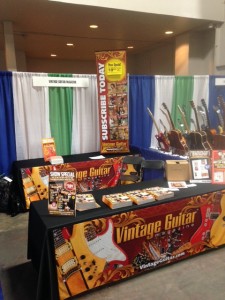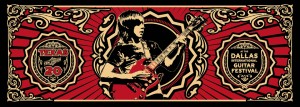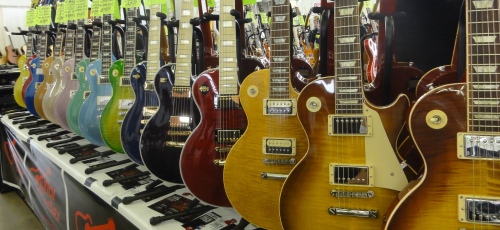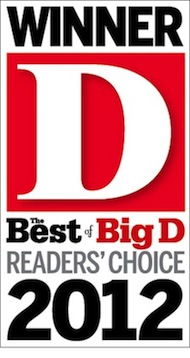What Happened at the 37th Annual Dallas International Guitar Festival Last Weekend?
My spirit and expectations were high last Saturday as I attended the 37th Annual Dallas International Guitar Festival The weather is usually good for most events in Fair Park, and I expected no different from this festival. Besides great weather, it had a lot going for it: live music, an expansive selection of vendors to choose from, a new location. New musical instruments are being sold with wide range of selection for different users. The festival also provided several opportunities to meet new friends who love rock and roll as much as I do. At least, that was what they were going for that weekend.
Like any other festival, it started out small and humble. It begin at he end of a great decade in rock, 1978. The concept was very simple, get a good deal on guitars and the equipment that comes with it. Over the years, the change of locations brought an influx of attendees and with more attendees, it attracted more businesses. The union of a music concert along with vintage guitar sales and trade was ingenious. Not only could you look for the perfect guitar, but also enjoy a jam session from many of the best local and national bands. What DIGF probably didn’t expect this year was a case of bad timing.
On the same weekend Dallas International Guitar Festival hosted their festival, across the Metroplex, Plano had the first annual Suburbia Music Festival; which boasted some extremely well-known artists in music, was all outdoors, and a marketing strategy that catered to a much more younger demographic. Little do people know, it was put on by Live Nation, but made to seem like it was a local operation.
Suffice it to say, the younger rival won out against the seasoned veteran. A bitter pill that I figuratively had to swallow when I entered the doors last Saturday.
I don’t need instructions to know how to rock
There was a good crowd that came for exactly what the festival was about. It was a rows and rows of well-known guitar dealerships from across the state and beyond. Sheehan’s, for instance, sells it guitars in itemized form; if there is an obscure part that you’ve lost on a guitar or something that you would like to add to it, then you came to the right place. Fuller’s Vintage Guitar, which had rows of guitars that raged from Gibson to Fender, also allowed people to test their guitars out.
There was this kid, barely ten years-old, who starting jamming on the guitars for sale. He knew the fret board like he had been playing on one since he was an embryo. Gibson Center, may have had the most elaborate stage in the convention hall. They turned a simple mobile trailer into a shrine/practice center for people that wanted to test their guitars with the audio system inside the trailer.
Vintage guitar festivals have been around a long time, and DIGF is no different. A niche market is always there for people that are either a guitar collector or a fan of rock. A majority of the attendees for most vintage guitar shows are more keen to performers like The Who, Led Zeppelin, Peter Frampton, and (ugh) Ted Nugent. It’s a complete contrast to many of the rock acts (indie or otherwise) which pack today’s concert venues.
There were some very memorable performances. Guthrie Kennard performed a set at the Woman’s Exhibit which is also where the Saturday Night All Star Jam was held with DIGF’s headline performers. The place had a good surround sound, but attendance was lacking. It was the same issue with other performers like Lance Lopez and Maylee Thomas, both of which performed outside the Women’s Exhibit individually. Lopez worked the crowd like a pro, and Thomas’s cover of R.E.M.’s “Everybody Hurts” was nothing short of amazing. But even with great performances, it’s very disappointing when bands play their hearts out on the stage, but barely have anyone to cheer.
A good promotion is hard to do
The station 89.3 KNON Radio was there, but not in the capacity that you would think. Many radio stations that set up shop in a music festival would do so to promote DIGF, offer tickets, giveaways, offer prizes, etc. They might be broadcasting live in real time, trying to attract listens to show up with dialogue about the significance of the festival and why you need to “come on down.” Instead, it was complete 180 degrees, and the only thing they were there to promote were other events that they also sponsor, but not the one that they’re that weekend.
Heritage Auctions was there as well, with security and cameras in tow to showcase their items. They were hawking some pretty cool stuff – clothes that were worn by Elvis Presley and a 1963 Olympic White Fender Stratocaster, owned by legendary guitarist Jimi Hendrix. Hendrix’s guitar should have been put in the front of the display section, opposed to Elvis’s hand-me-downs.
 All and all, my feelings about DIGF were mixed. I was able to see some of the best made guitars on display by many dealerships, but the music festival left something to be desired. The bands came, worked hard, and played harder, but how a festival is marketed and attracting current music acts to fill in seats and open spaces determines how successful the next festival will be next year. Some sub 20 year-olds consider alt-rock bands from the 1990s “classic rock”, and this may be the new normal. DIGF might need to borrow a feather from Suburbia’s hat, and book some more modern bands to attract some young, hip, fresh faces and with it a new crop of attendees, otherwise their demographic may eventually die off. However, it was a great fest for the right crowd with a few hundred bucks to spend on the right axe.
All and all, my feelings about DIGF were mixed. I was able to see some of the best made guitars on display by many dealerships, but the music festival left something to be desired. The bands came, worked hard, and played harder, but how a festival is marketed and attracting current music acts to fill in seats and open spaces determines how successful the next festival will be next year. Some sub 20 year-olds consider alt-rock bands from the 1990s “classic rock”, and this may be the new normal. DIGF might need to borrow a feather from Suburbia’s hat, and book some more modern bands to attract some young, hip, fresh faces and with it a new crop of attendees, otherwise their demographic may eventually die off. However, it was a great fest for the right crowd with a few hundred bucks to spend on the right axe.








